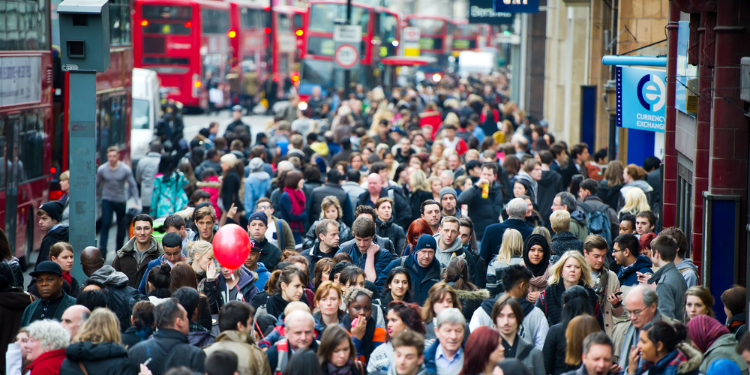Productivity, unemployment: The challenge of OECD countries
In addition to the consequences of the Covid pandemic, the war in Ukraine has also impacted most countries around the globe. This brings a new blow to economies and opens the door to a new social and economic meltdown. While many OECD countries are experiencing labor shortages, which are deemed very favorable to job creation, the situation varies significantly from one country to another and sometimes even within countries.
The United Kingdom, for instance, has been in crisis ever since Brexit, and the country is experiencing both a drop in productivity and labor shortages in many sectors, especially in transport, catering, hotels, etc. According to the British think tank, the Institute for Public Policy Research (IPPR), the productivity gap has widened by 0.04 points. While the British gap may seem small, it is still among the most significant in OECD countries. For example, the gap stands at 0.003 points in Spain, peaks at 0.007 points in Denmark, and 0.013 points in Germany. Ireland has a worse productivity gap than the United Kingdom (0.12 points).
Naturally, productivity goes hand in hand with employment levels and wages. Other OECD countries are also experiencing the crisis with more regional disparities. While the unemployment rate has dropped in the OECD (4.8% in June 2022), many contrasts exist between countries. Germany, Poland, Ireland, Slovenia, and Hungary, amongst others, are theoretically facing full employment, with an unemployment rate below 5% (November 2022 figures from Eurostat). Other OECD countries like France, Italy, Finland, and Sweden have unemployment rates between 5 and 10%, while Spain and Greece have rates above 10%. That being said, the United Kingdom is also theoretically facing full employment, with a 3.7 percent unemployment rate in November 2022.
Jobs, wages, and inequalities in Europe
While 66 million jobs have been created in the OECD following the post-Covid recovery, 57 million of them were lost by 2020. With labor shortages, most OECD countries have returned to a positive balance in terms of job creation (9 million for all countries). However, the gap between the rich and the poor is widening and has even accelerated since the pandemic. One of the leading causes of this growing impoverishment is job loss in sectors that are highly sensitive to the market's ups and downs, especially jobs that are also affected by the economic situation, often low-paid jobs. On the other hand, jobs in the less exposed sectors have generated better income.
The gender pay gap is still as wide as ever. In 2020, it peaked at 12% for the entire OECD. The only country that stands out is Luxembourg, with a 1.4 percent gender pay gap standing. Some countries like Italy, Poland and Belgium fall below the 10% mark, with 4.2%, 4.5% and 5.3%, respectively. On the other hand, other countries, like Spain, Sweden, Ireland, and Denmark, are beyond the 10%-mark. For France, a country where the wage gap between men and women seems to be decreasing, stats show 15.8%. The United Kingdom does a little better, with 15.5%. Finland, where gender equality is a priority, does even worse, with 16.7%, while Germany has an 18% rate. In Estonia and Latvia, there's a gigantic gap of 21.1% and 22.3%, respectively.
However, there are many disparities, even in Luxembourg. They mainly concern types of contracts and the number of worked hours. Women are actually more exposed to part-time work, which negatively impacts their wages and contributes to the gender pay gap.
Crises and galloping impoverishment in Europe
In France, on average, 10% of the highest earners receive 6.9 times the income of the 10% least wealthy. While the richest 10% earn an average of 5,014 euros per month, the poorest 10% earn 726 euros, which is below the poverty line (918 euros), while the wealth threshold stands at 3,674 euros per month. Such inequalities have risen since the 2000s, peaking in 2008 with the subprime crisis and in 2018 with incentives favorable to high incomes. The trend slowed down in 2019 until the health crisis of 2020.
In Germany, inequalities are on the rise despite supposedly full employment. The country's poverty rate rose from 14.3% in 2010 to 16.8% in 2019. Launched in 2005, the Harz IV laws, which were designed to reduce inequalities, have actually raised levels of social discrepancies. In fact, to speed up the return to work, the Harz IV laws compelled the unemployed to accept any kind of work. Economists believe that this punitive policy aggravated social tensions and accelerated impoverishment. Since then, Germany has opted for a less constraining policy, but the sequels remain.
Why the UK is the Kingdom of inequalities
In the 2010s, the UK was already described as the "kingdom of the wealthy". While the trend had been declining at some point, inequalities rose again with the Covid crisis, and this exacerbated social tensions. As a matter of fact, low earners find it hard to bear the salary increases of the wealthiest. For example, in February 2022, salaries in the finance sector jumped by 31 percent (compared to 2019), as opposed to the barely 14 percent rise in other sectors. At the same time, inflation has caused the minor wage increases to melt away. So, there are now more wealthy people in a poor society!
According to HMRC and the Office for National Statistics (ONS), there are wage inequalities even within the financial sector. The most significant increases have been in senior positions, due less to wealth production, with British growth stagnating. They are the result of record profits for some large banks, from which the majority of the population is excluded. In 2022, household disposable income dropped by -0.6 points in the United Kingdom, compared with +0.5 points for all OECD countries.
Is the UK still attractive for expats?
According to economists, the United Kingdom continues to bear the brunt of Brexit. Repeated crises have amplified these effects since 2020, which have even struck the political scene. Between Johnson's pirouettes and Truss's lightning appearance, Sunak's fortune made people cringe. The latter wants to be the man of reconciliation, but demonstrations have been shaking the country since 2022 and are not about to stop. Railway workers, drivers, teachers, nurses, and public organizations have already been protesting. This month of February is already being considered a social milestone, with several strike movements up nearly every day.
London remains a key destination for employment and entrepreneurship
Is the UK still an attractive expat destination? Yes, according to the main stakeholders. For Italian immigrants, for instance, the country remains the best option for career development. In September 2022, 600,000 Italians applied to reside in the UK, outnumbering all European nationalities. Conversely, for other European nationals, there is a sustained trend to leave the UK, and especially to leave London and its very expensive housing market. But in London, salaries are still higher on average than in Rome. There are also more opportunities for career advancement. These are the main reasons why Italian immigrants move to the UK.
The same is true for French immigrants. The departure of Europeans creates a void in the British labor market, which is an additional opportunity for them to secure jobs. French expats believe that the cost of Brexit (visa costs, health care system, etc.) and the energy crisis can be amortized by salaries, which, in their opinion, are higher than in France. Foreign entrepreneurs are also entitled to a range of benefits. For example, they enjoy an attractive corporate tax rate, although it's been rising since January 1 (for companies with profits of more than £250,000). Above all, they appreciate the liberal vision of the United Kingdom, which does everything to make their integration smoother.
Immigration in the UK is on the rise
According to the British Office for National Statistics, the country welcomed 500,000 new immigrants between June 2021 and June 2022. This is 300,000 more than in the previous period. The British Office for National Statistics believed that this increase is justified by the international context. The border reopening has allowed many international students to return to the United Kingdom, while the war in Ukraine has led many Ukrainians to immigrate to the UK. According to the Office, 39% of immigrants arrived on a student visa, and 21% immigrated on a work visa.
In the face of labor shortages, British employers are calling on the government to relax its immigration policy. As ministers advocate training for Britons, employers are counterattacking. In their opinion, the skills available locally do not meet market requirements, especially in sectors that are in tension. Employers insist that now is the right time to hire foreigners. Is this a message for potential expats? In November 2022, Prime Minister Sunak sounded more in favor of visas for highly qualified foreigners, but he hasn't spoken much about this since then. So it remains to be seen whether the economic situation will reverse the trend.
















